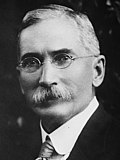Changes to the franchise
Since the 1929 election several changes had been made to the franchise laws. Adult white women were enfranchised in 1930. In 1931 all European males over the age of 21 were enfranchised (eliminating property and wage qualifications for that section of the population). [2]
One effect of these changes, which were not extended to the non-white population of the Union, was to dilute the influence of the non-white electors in Cape Province and Natal.
Results
The vote totals in the table below may not give a complete picture of the balance of political opinion, because of unopposed elections (where no votes were cast) and because contested seats may not have been fought by a candidate from all major parties.
As the two largest parties were in coalition together, the opposition to the government was weaker and more fragmented than in any other election in South African history.
 |
|---|
| Party | Votes | % | Seats | +/– |
|---|
| National Party | 101,159 | 31.61 | 75 | –3 |
| South African Party | 71,486 | 22.34 | 61 | 0 |
| Roos Party | 27,441 | 8.58 | 2 | New |
| Labour Party | 20,276 | 6.34 | 2 | –6 |
| Natal Home Rule Party | 12,328 | 3.85 | 0 | New |
| Independents | 87,321 | 27.29 | 10 | +9 |
| Total | 320,011 | 100.00 | 150 | +2 |
|
| Valid votes | 320,011 | 98.95 | |
|---|
| Invalid/blank votes | 3,406 | 1.05 | |
|---|
| Total votes | 323,417 | 100.00 | |
|---|
| Registered voters/turnout | 957,636 | 33.77 | |
|---|
| Source: South Africa 1982 [4] |
An alternative breakdown of members, distinguishing between supporters and opponents of the coalition, was (pro Coalition) NP 75, SAP 61, Creswell Labour 2, Roos 2; (opposition) National Council Labour 2, Natal Home Rule 2, Independents 6. [5] Another interpretation is NP 75, SAP 61, Labour 4, Roos Party 2, Home Rule group 2 and Independents 6. [6]
This page is based on this
Wikipedia article Text is available under the
CC BY-SA 4.0 license; additional terms may apply.
Images, videos and audio are available under their respective licenses.






